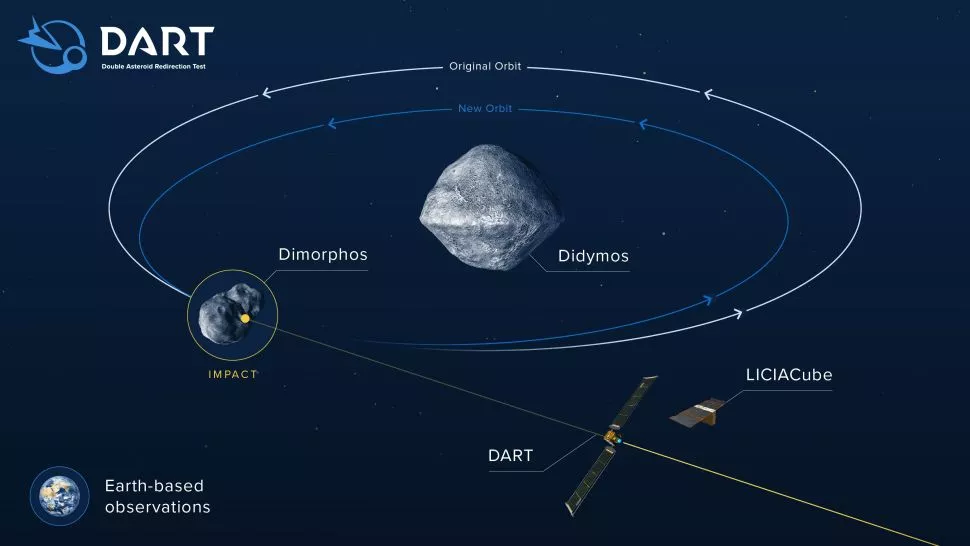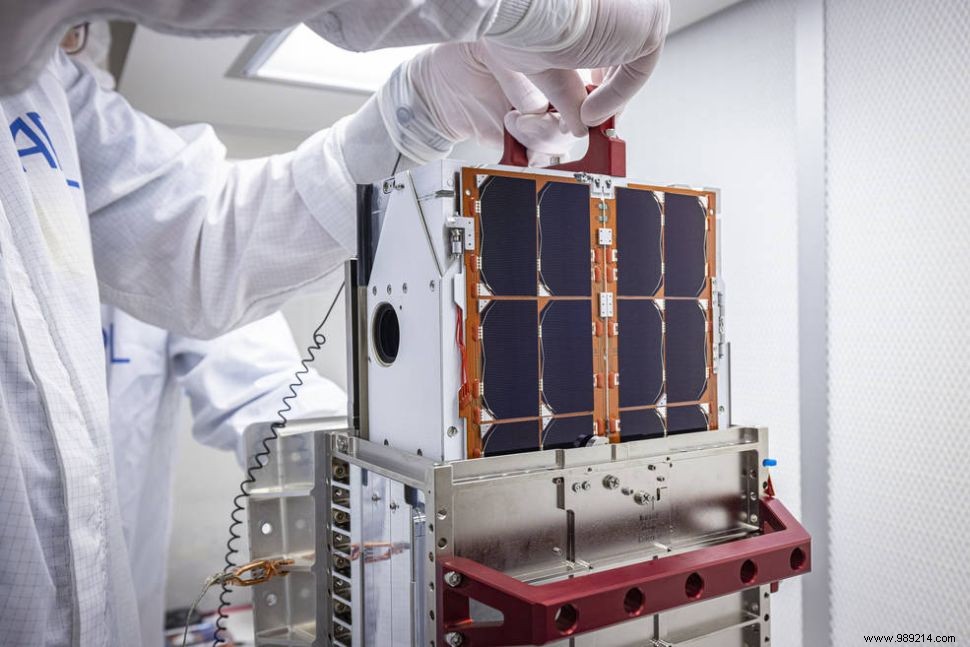At the end of November, the DART mission will launch a spacecraft to crash into an asteroid to change its orbit. The small LICIACube satellite will separate from its companion ten days before impact to film the hostilities.
Space agencies are considering different ways to defend us against possible asteroid threats. One of the advanced options offers to modify the trajectory of the objects concerned . But is this option really possible? To find out, NASA and the European Space Agency (ESA) have developed the DART mission (for Double Asteroid Redirection Test). The mission will be launched on November 24 aboard a SpaceX Falcon 9 rocket.
The mission will focus on a pair of objects moving in tandem composed of a 780 m diameter asteroid called Didymos around which evolves a small rock 160 m in diameter, named Didymoon. The DART spacecraft, which is nothing more than an impactor, will arrive on site in the fall of 2022 after more than seven million kilometers traveled . From then on, he will have only one objective:to come and crash on this small moon.
According to the mission team, the shock should be able to accelerate the moon's orbit by a few tens of seconds. The researchers will observe this change in trajectory of the body struck around the other by measuring its degree of reflectance, while an emissary will take care of immortalizing the event, directly on the spot. Indeed, the DART mission will also carry a CubSat named LICIACube, developed by the Italian space agency. The latter will separate from the main ship about ten days before the impact to capture data, as well as images of its disappearance, before sending them to Earth at the mission control center in Turin, Italy.

LICIACube is not as big as its suicidal companion. If the latter will be about the size of a school bus, the small CubStar will not be much bigger than a handbag .
To operate, LICIACube will need to stand at a good distance:not too close to reduce the risk of impact with ejected materials, but close enough to obtain good images.
Regarding the images, LICIACube will be armed with two optical cameras named LUKE and LEIA (in homage to Star Wars). LEIA is a high-resolution imager capable of observing details of the impact plume and the asteroid's surface in black and white, while LUKE offers a wider field of view allowing it to follow the entire plume. throughout its passage. It is also equipped with red-green-blue color filters that can help scientists learn more about the physical properties of the moon.

Note that the DART ship has also its own camera , called DRACO, on which he will rely for guidance about four hours before impact. Once the spacecraft hits, DRACO will be destroyed, but the data collected before the crash will be sent back to Earth in near real time (expect about 38 seconds of delay with distance).
LICIACube will store its data and continue to transmit images to Earth for weeks after the crash. In theory, it should die out after about six months.